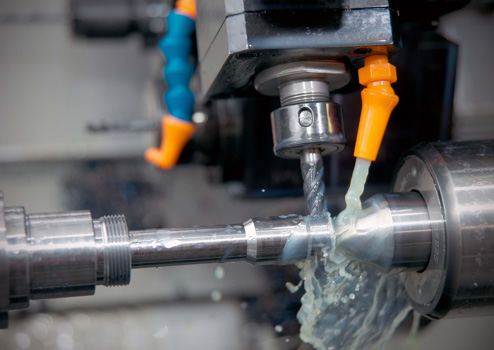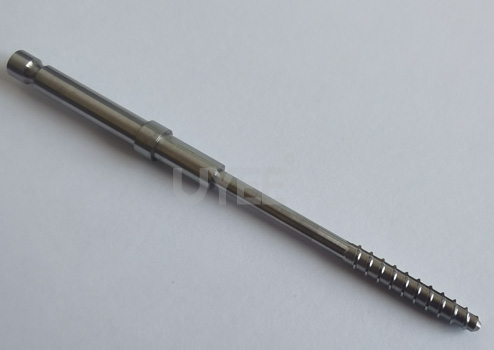Five Good Methods for Cleaning CNC Machined Parts
After processing the precision components, debris such as sticky cutting fluid, oil, dirt, and other particles will be visible on the surface. Each piece must be ultrasonically cleaned before the plating process if the details need to be coated or plated. The best results from clean machining parts will ensure that the things you produce are as good as possible. Cleanness is a must for your part design to meet the required tolerances.
Because the cleanliness of parts after cleaning directly impacts the quality of assembly and the service life of construction equipment, washing parts is an essential step in the assembly process for construction machinery. When cleaning components, the goal is to remove any types of filth that may still be present on the surface. To perform an excellent job of cleaning the parts, the cleaning agent and technique should be carefully chosen according to the criteria for pollution and cleanliness, as well as the material and structural features of the parts.
Is it essential to clean the CNC machined parts?
Parts cleaning is a crucial step in the assembly of construction machinery since it directly affects the quality of the assembly and durability of the machinery. It’s easier to maintain CNC machinery to assure greater quality control, longer machine life, and more output by adhering to the suggested maintenance practices. This is crucial for businesses whose manufacturing significantly depends on CNC machines.
We are a manufacturer of precision mechanical parts, and we would like to take this opportunity to remind you that cleaning procedures should be carefully chosen following the causes and characteristics of oil pollution to ensure that parts can be used commonly, avoid corrosion or other damage, and stop environmental pollution from contaminating parts in the future.
Do you know what is necessary to clean precision CNC machined components appropriately? Today’s lesson will discuss various techniques for cleaning precise prototype and components.

There are five primary cleaning processes for precision CNC machining components, and they are as follows:
-
Scrub
Scrubbing the machined components thoroughly is the simplest of all the possible cleaning methods. Washing anything to remove oil and grime is the same as scouring anything else, but since we are dealing with machined components here, you need to scrub them in a particular manner. Before you can even begin cleaning these machined pieces, you must first place them inside a container.
You may scrub the components with cotton yarn or a brush as soon as they have been immersed in any of these cleaning solvents. That is all there is to it. You may apply this to good use by cleaning a modest quantity of CNC prototypes or tiny components; it will do the job admirably. Nevertheless, although it is relatively simple to use, this strategy is not as effective as the others. Because of the fat-soluble qualities of gasoline, regular use of this approach should be discouraged for several reasons.
-
Boil
Boiling the machined components is another method that may boost their effectiveness by removing any dirt or oil on them. To begin, you will first need to create a solution, like you would prepare an answer to scrub the machined components. You will need to put the key and the pieces into a clean bath and give those infants the bath time they need. The bathtub should be fabricated from welded steel plates cut to the correct dimensions and equipped with an under-pool burner. After that, you will need to heat the bath to temperatures between 80 and 90 degrees and let it boil for a continuous period of between three and five minutes.
-
Spray Washing
Spraying the cleaning solutions onto the machined pieces to clean them is one method for doing so. On the other hand, this procedure is not very useful for components with intricate forms or significant oil stains. To completely clean the machined components, you will need to spray the cleaning liquid onto the surface of the parts using a certain pressure and temperature. Only then will the details be spotless.
-
Vibration Cleaning
To do this, you will first and foremost need a vibrator washer. The vibration of the washer will act like that of hand-washing the components, and the cleaning fluid will remove any dirt and grease that may be present on the surface of the machined parts. When the vibrator washer is finished, the components it produces will be orderly, spotless, and perform at a very high level.
-
Ultrasonic Cleaning
This procedure won’t need anything since the cleaning liquid will do everything for you. It is possible to rely on cleaning solutions since they possess ultrasonic oscillation quality and because they can clean the surface of the machined components. You will need to immerse the machined parts in a cleaning liquid that utilizes ultrasonic oscillation to do the task. This cleaning liquid will accomplish the task by generating a chemical reaction, resulting in the total removal of all dirt, oil, and grease.

Conclusion
We hope these CNC machined parts cleaning tips will help you keep your parts clean and in good condition. People’s expectations about the surface quality and overall quality of metal workpieces continue to rise in tandem with the fast expansion of industrialization. After the metal workpiece has been manufactured, it will permanently get tarnished with oil, stains, or a mixture of the two types of adhesion. The process of parts cleaning helps maintain the equipment’s optimal performance and ensures that the machined components are of the highest possible quality.
We maintain the proper cleaning standard for cleaning our CNC machined parts. To fulfill the requirements of the most complex applications, we work hard to provide the most reliable CNC machining service possible for various materials. We think that providing our clients with design and production advice may assist them in making the most appropriate decisions for their products. You may get in touch with us about your project by sending an email to our support team.
